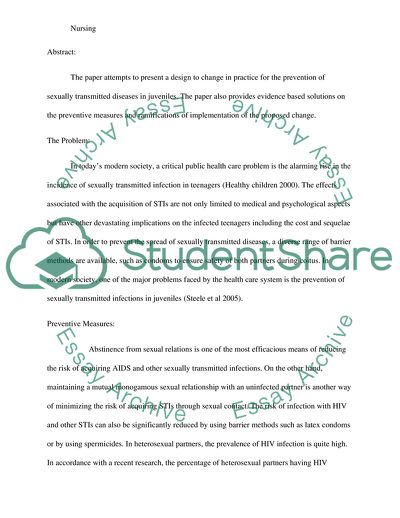Cite this document
(Preventing STI on juveniles Essay Example | Topics and Well Written Essays - 1000 words, n.d.)
Preventing STI on juveniles Essay Example | Topics and Well Written Essays - 1000 words. https://studentshare.org/medical-science/1765985-prevention-of-sexually-transmitted-infection-in-juveniles
Preventing STI on juveniles Essay Example | Topics and Well Written Essays - 1000 words. https://studentshare.org/medical-science/1765985-prevention-of-sexually-transmitted-infection-in-juveniles
(Preventing STI on Juveniles Essay Example | Topics and Well Written Essays - 1000 Words)
Preventing STI on Juveniles Essay Example | Topics and Well Written Essays - 1000 Words. https://studentshare.org/medical-science/1765985-prevention-of-sexually-transmitted-infection-in-juveniles.
Preventing STI on Juveniles Essay Example | Topics and Well Written Essays - 1000 Words. https://studentshare.org/medical-science/1765985-prevention-of-sexually-transmitted-infection-in-juveniles.
“Preventing STI on Juveniles Essay Example | Topics and Well Written Essays - 1000 Words”. https://studentshare.org/medical-science/1765985-prevention-of-sexually-transmitted-infection-in-juveniles.


